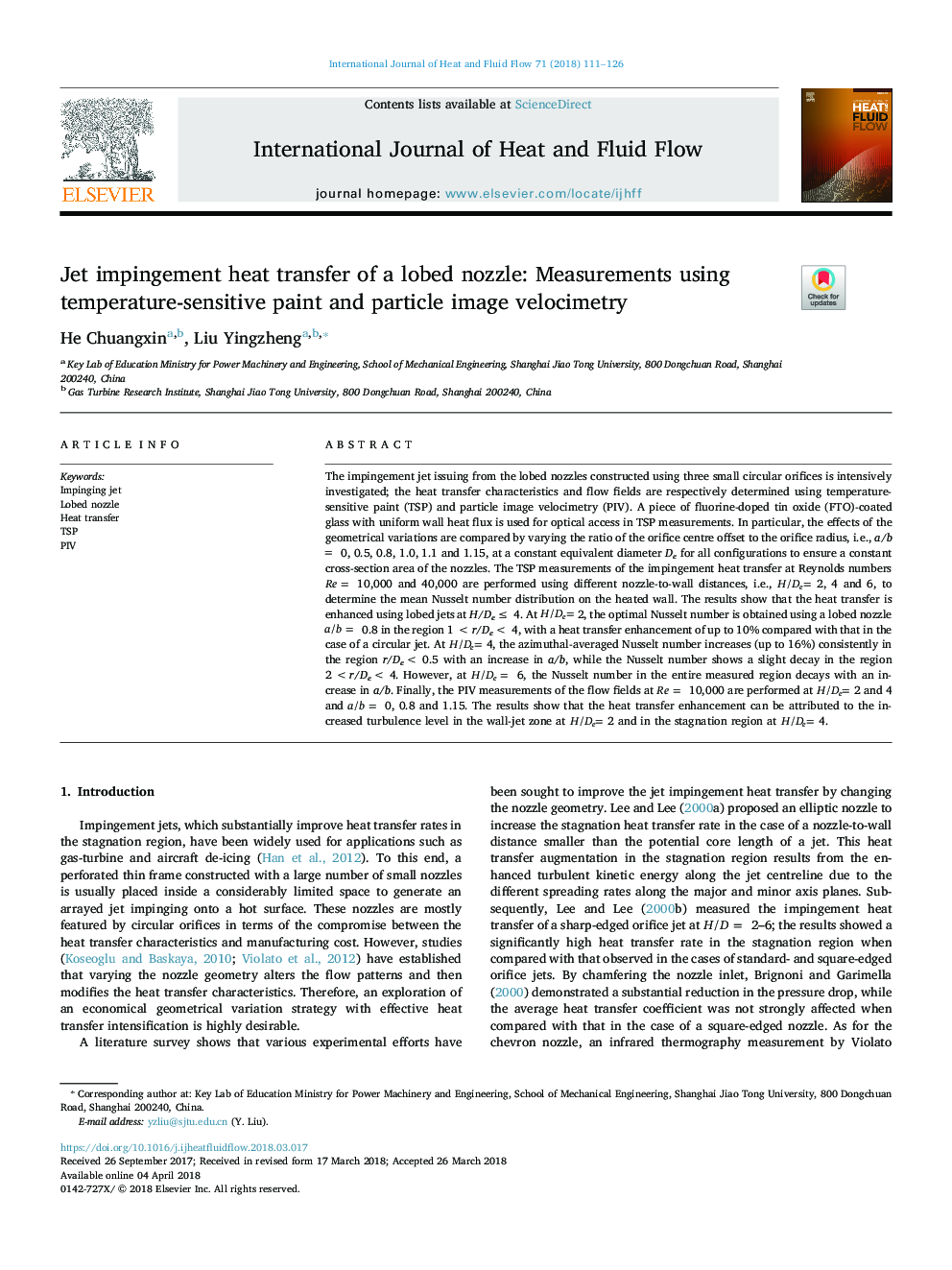| کد مقاله | کد نشریه | سال انتشار | مقاله انگلیسی | نسخه تمام متن |
|---|---|---|---|---|
| 7053455 | 1457607 | 2018 | 16 صفحه PDF | دانلود رایگان |
عنوان انگلیسی مقاله ISI
Jet impingement heat transfer of a lobed nozzle: Measurements using temperature-sensitive paint and particle image velocimetry
ترجمه فارسی عنوان
انتقال حرارتی جت برقی از یک نازل لخت: اندازه گیری با استفاده از رنگ سنجی حساس به حرارت و سرعت سنجی تصاویر ذرات
دانلود مقاله + سفارش ترجمه
دانلود مقاله ISI انگلیسی
رایگان برای ایرانیان
موضوعات مرتبط
مهندسی و علوم پایه
مهندسی شیمی
جریان سیال و فرایندهای انتقال
چکیده انگلیسی
The impingement jet issuing from the lobed nozzles constructed using three small circular orifices is intensively investigated; the heat transfer characteristics and flow fields are respectively determined using temperature-sensitive paint (TSP) and particle image velocimetry (PIV). A piece of fluorine-doped tin oxide (FTO)-coated glass with uniform wall heat flux is used for optical access in TSP measurements. In particular, the effects of the geometrical variations are compared by varying the ratio of the orifice centre offset to the orifice radius, i.e., a/b=0, 0.5, 0.8, 1.0, 1.1 and 1.15, at a constant equivalent diameter De for all configurations to ensure a constant cross-section area of the nozzles. The TSP measurements of the impingement heat transfer at Reynolds numbers Re=10,000 and 40,000 are performed using different nozzle-to-wall distances, i.e., H/De= 2, 4 and 6, to determine the mean Nusselt number distribution on the heated wall. The results show that the heat transfer is enhanced using lobed jets at H/Deâ¯â¤â¯â4. At H/De= 2, the optimal Nusselt number is obtained using a lobed nozzle a/b=0.8 in the region 1ââ¯<â¯r/Deâ¯<â¯â4, with a heat transfer enhancement of up to 10% compared with that in the case of a circular jet. At H/De= 4, the azimuthal-averaged Nusselt number increases (up to 16%) consistently in the region r/Deâ¯<â¯â0.5 with an increase in a/b, while the Nusselt number shows a slight decay in the region 2ââ¯<â¯r/Deâ¯<â¯â4. However, at H/De=6, the Nusselt number in the entire measured region decays with an increase in a/b. Finally, the PIV measurements of the flow fields at Re=10,000 are performed at H/De= 2 and 4 and a/b=0, 0.8 and 1.15. The results show that the heat transfer enhancement can be attributed to the increased turbulence level in the wall-jet zone at H/De= 2 and in the stagnation region at H/De= 4.
ناشر
Database: Elsevier - ScienceDirect (ساینس دایرکت)
Journal: International Journal of Heat and Fluid Flow - Volume 71, June 2018, Pages 111-126
Journal: International Journal of Heat and Fluid Flow - Volume 71, June 2018, Pages 111-126
نویسندگان
He Chuangxin, Liu Yingzheng,
